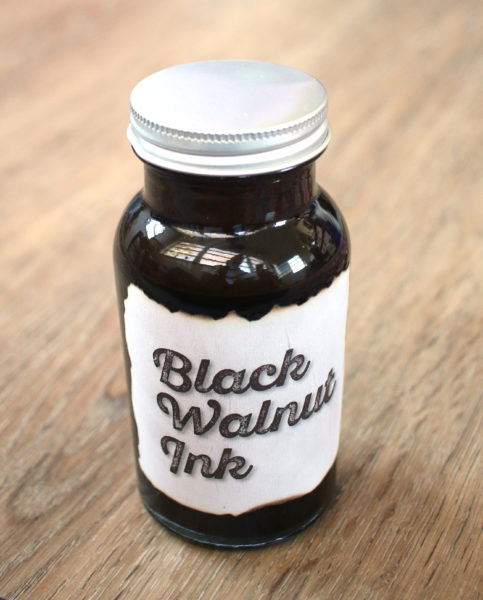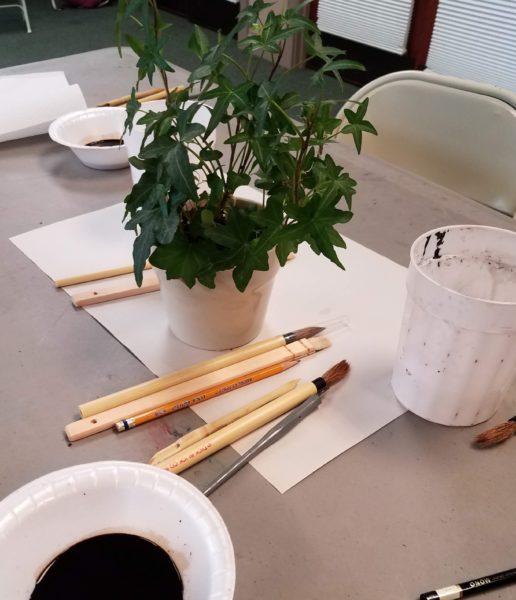 Drawing with Walnut Ink
Drawing with Walnut Ink
Walnut ink is one of my favorite drawing mediums. I am excited to be teaching a workshop on Walnut Ink tools and techniques at the Art Supply Depo in March.
About eight years ago pen and ink became my medium of choice for figure drawing. I love the way the ink flows from the nib. The warm browns of the walnut ink create a more lifelike color story in the ink figure drawing than black ink.
The Walnut Ink
The walnut ink that I have been using all these years I acquired directly from Tom Norton of Tom Norton Walnut Ink in Cambridge Massachusetts. I met him years ago when I was working in Cambridge, MA at a frame store near where he lived. When I finally tried it I was hooked.
In addition to the Tom Norton Walnut Ink I have also begun using homemade walnut ink which my husband MADE HIMSELF… from walnuts that fell from a tree!
My husband is a curious person who enjoys learning new things and time-intensive processes (like knitting and homebrewing). Therefore it is natural that he decided to investigate how to make the traditional walnut ink.
Knowing how much I love walnut ink tools and techniques, wanted to give me a gift. He took the opportunity to explore the lengthy process of making black walnut ink from scratch. While I was gone for four days last fall, he and our girls (ages 5 and 3) collected walnuts from a tree in our neighborhood and brought them home. They then smashed them, cooked them, strained them, then reduced the cooking mixture until it was a thick, beautiful brown ink. He watched it cook on the burner of the outdoor grill while the girls played in the backyard.
This 8 oz bottle should last me a couple of years. Now that I know that the process can be a family activity, maybe I will make my own from now on.
The homemade walnut ink is supposed to be much more acidic than the Tom Norton Walnut Ink so archival ph is a factor I also have to take into consideration.
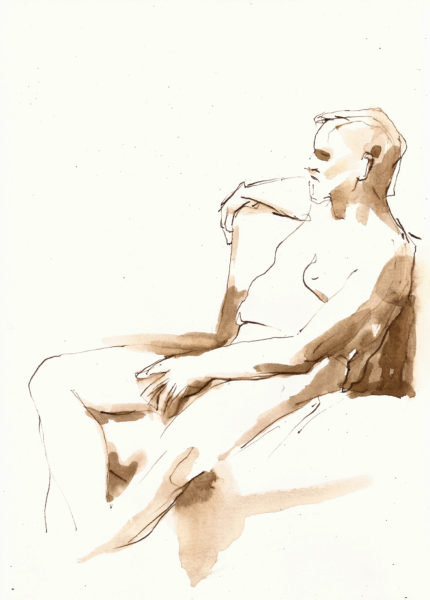
Seated Male FIgure, Walnut Ink on Paper, 10″ x 7″ ©Michelle Arnold Paine All Rights Reserved. Click to Purchase.
Tools To Use with Walnut Ink
The main tools I use with walnut ink are a nib pen, sumi brush, and watercolor brushes. My students enjoy the bamboo reed pen as well. The ancient Egyptians used a tool almost identical to the reed pen to write hieroglyphs on papyrus. Van Gogh also used a homemade reed pen to create his intricate ink drawings.
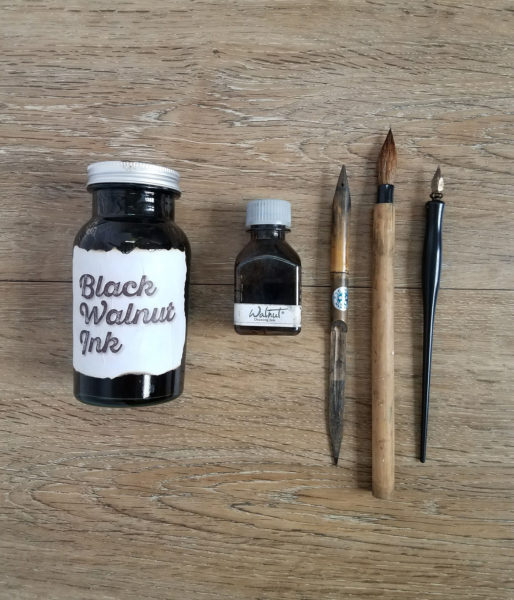
Homemade Walnut Ink, Tom Norton Walnut Ink, Reed Pen, Sumi Brush, Nib Pen
With tools like these artists can create a wide variety of marks and effects. Whether working loosely (see the blog post Memory and Mystery) or with precision (see the blog post Eve: Closed Door to Heaven) , these simple tools can achieve either effect.
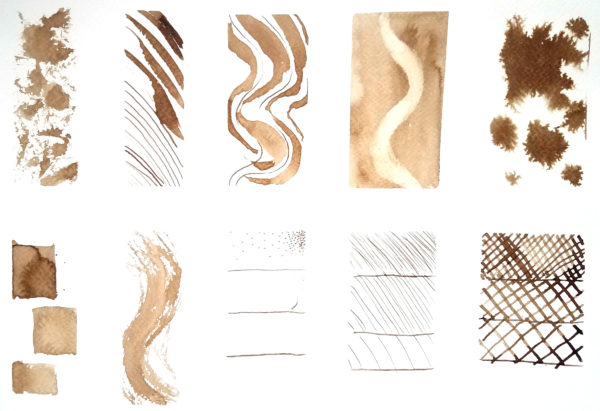
Sample Walnut Ink techniques ©Michelle Arnold Paine
Walnut Ink Techniques
Walnut ink is very forgiving, so I always include instruction on how to lift both wet and dry walnut ink from paper. In the workshop I teach how to use repetitive marks like hatching, cross-hatching and stippling. In addition, dry brush and calligraphic lines are more fun walnut ink techniques. My students always love exploring all the different effects which can be used.
Watch the video below for a sample to see how Van Gogh used the reed pen to create his incredibly intricate drawings. Follow me on Facebook for tiny art lessons every week for #MasterpieceMondays.
Please visit my online store for a wide variety of walnut ink figure drawings. For more information about the upcoming Drawing with Walnut Ink Workshop in Toledo, check out the Art Supply Depo website.
And if you want to be notified in your Inbox the next time I release new drawings or teach a workshop, sign up!

